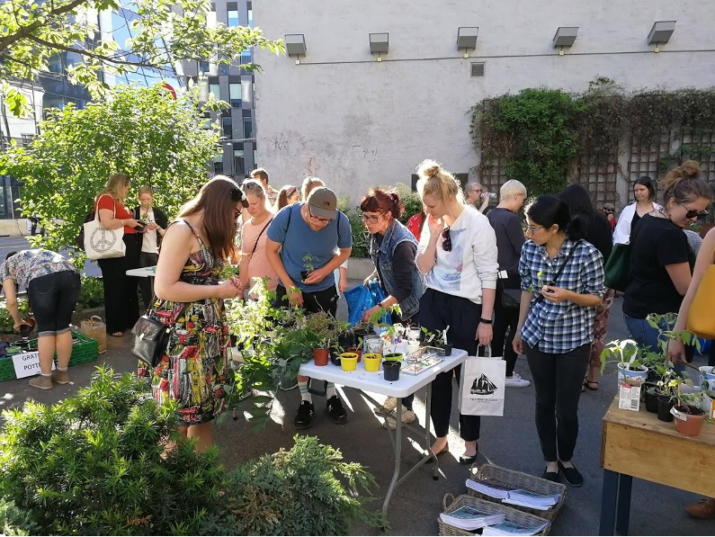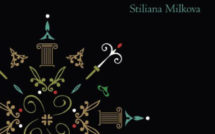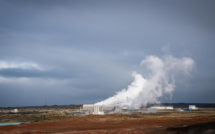
Digital Placemaking Tools Propel Sustainable Urban Development Beyond Temporary Interventions

This is part of our special feature, Sustainable European Cities and Digitization.
Placemaking, PlaceCity, and The Toolbox
Placemaking is far more abstract than simply making a place. It is not focused primarily on the end result, but rather the co-creative, democratic, and inclusive processes along the way. A simplified, albeit inaccurate, representation of placemaking often includes upside down hanging umbrellas, new plants, and funky colorful street furniture inserting lighter, quicker, and cheaper coziness into a derelict setting. This incomplete practice of placemaking is often associated temporally towards the end of a project to superficially consider users’ needs as a form of checking the box on public relations; moreover, this is also commonly linked to improving the status of an area specifically to return quick financial capital. Essentially, place-branding can disingenuously masquerade as placemaking when city-makers and developers are not attentive to conscientiously involving users, communities, and stakeholders surrounding a place from the onset of the project in order to create collaboration on the social, organizational, and physical design and values. Indeed, as above mentioned, physical elements, such as greenery and atmospheric props, are helpful to turn a space into a place, but without deep and genuine citizen participation, this approach cannot be termed as placemaking. In principle, placemaking both uncovers and builds from the soul and identity of the community in order to bring out personality, belonging and representation.
Quite directly put, placemaking is the process of building communities around a place; this succinct definition was laid out by Project for Public Spaces Project for Public Space (PPS) based in New York. A natural progression of inspiration percolating from social thinkers and doers of the era and the area, both Jane Jacobs’[1] and William Holly Whyte’s[2]seminal works on observing and analyzing urban social life, catalyzed PPS to establish itself. During the 1990s, PPS’s consistent, sustainable, bold, and conscientious work with communities to build urban space into home-like places, defined a field of work that has thus evolved[3]—growing throughout the United States to Europe and globally.
As such, PlaceCity: Placemaking for Sustainable and Thriving Cities[4] is an international placemaking project examining Vienna, Austria and Oslo, Norway as comparative case studies to research, test, and empower resilient strategies for increasing the quality of life. Pertinent to this exploration, two relevant project partners are introduced: Placemaking Europe, the leading network/organization for placemaking in Europe, acts as the leading partner regarding placemaking expertise and founder of The Toolbox, while Nabolagshager, a social enterprise in Oslo, leads the Oslo case study to incorporate skilled grass-roots community engagement and tactical prowess for placemaking tool application and development. To both coalesce learnings across the case studies (Vienna and Oslo) and also upscale project developments inclusively for placemakers into the future, PlaceCity pointedly strives towards a robust and open-source digital placemaking toolbox: The Toolbox maintained and hosted by Placemaking Europe.
Inclusively defined, Placemaking Europe posits a placemaking tool as a discrete resource that is replicable, contextually flexible throughout different cities, step by step, and assists in the overall aim towards building communities around a place. Such tools may be implicitly used, or explicitly identified and developed into manuals. It is Placemaking Europe’s goal to connect with the actors involved in public space interventions and community development, such as placemakers, artists, civil servants, or eager citizens, to transcribe tool concepts into complete tool manuals hosted on the open-source, digital Toolbox. While The Toolbox is being developed in various European cities, it is contextually flexible for versatile hands-on applications ranging from both thematic focuses and strategic phases[5] to public space interventions with an uptake on a global level. Tool tests have been carried out from the Netherlands to Bulgaria to the USA as well as in Oslo and Vienna. The open-source tools facilitate local community development, and further, engage the neighborhood’s public places with trust, inclusivity, care, and ownership at the core.
Why create a digital toolbox?
The goal to develop an open-source and creative commons toolbox online reaps many rewards: it is a sustainable method to connect existing knowledge with impassioned placemakers, and thus allows the shared resources to develop with feedback rather than reinventing the wheel by acting independently. The challenge of time and space is overcome with such digital methods connecting users around the world at the click of a mouse. Moreover, communal ownership encourages global flexibility balanced with local efficacy, by which both autonomy and creativity are facilitated in the toolbox application and development. Overall, the digital toolbox increases accessibility across contexts and languages, connects new placemakers with experienced ones, and allows comparing tool applications to understand contextual differences for improvements. The participants of Placemaking Europe are able to develop and share tools they have made on their own, or develop them together with the organization—regardless, Placemaking Europe ensures that every resource added to the Toolbox is enthusiastically consented to and credits the creator, author, and artists.
How to develop digital manuals for The Toolbox
PlaceCity partner, Nabolagshager, focuses on creating green and social cities- hence the tools developed here seek to engage the local community, strengthen democratic bottom-up processes, create spaces for social exchanges across generations, cultures, and nationalities, as well as promote circular economy and biodiversity. The development process for tools that facilitate a social and green city is underpinned by a deep consideration of diverse users and inclusive user-design with comprehensive step-by-step guides. As such, tools originating from Nabolagshager, with the support and guidance from Placemaking Europe, display best practices on ways to engage the community with a focus on environmental aspects.
While every tool or guide is uniquely created, the development process requires key milestones across the board. Here, we tap into the workflow for prolific and successful tool development incorporating such indicators of success.[6]
Moreover, the specific resources born from Nabolagshager’s diligent and upbeat teamwork are outlined below. Placemaking tools added to The Toolbox always originate from real life interventions that have been put to action; the tools are practically realized to ensure they work for the local communities, and are not rooted in theory alone. Therefore, the tool manuals’ steps, tips, recommendations for troubleshooting, and material checklist are easily translated from using the real-life intervention as a guide. Naturally, and inherent to the placemaking ethos, each place has a unique identity; therefore, all tool manuals include a brief background to contextualize how and from where the tool emerged in order to honor the soul of the place and to facilitate creative representations. A tool also entails a clear description of the point in the placemaking process it may be best used, such as during the research phase of a project, while procuring funding, or towards the end during the handover period. Strategic words, terms, and clear communication are vital for any placemaking tool to close the divide from living online, to being tested and applied in reality. Each tool is illustrated to make reading more fun; tools are also team tested to ensure that high quality standards and user-friendliness are met before they are uploaded with tags to The Toolbox. This process makes step by step and thematic searching easier. Further, digitizing and sharing the tools bridges local experience with global readership, thus spreading key knowledge on practices to make quality public places. The digital toolbox helps disseminate inspiring bottom-up practices that contribute to environmentally friendly, socially just and inclusively developed urban projects. In this way, past experiences link with present ones and become available for future projects.
Inspiring Tool Manuals from Oslo
The Plant and Seed Swaps tool exemplifies how communities can work towards a sustainable circular future coalescing environmental, social, and economical opportunities. This tool walks the reader through steps on how to create a swap—whether it be for houseplants, vegetable plants, or seeds—with and for the local community. Everyone is invited to harvest and save seeds or to make plant cuttings (propagating) that they then bring to the proposed community event. During the event, each participant gets a ticket in return for each plant or packet of seeds they bring. All the seeds and plants are put on tables and people can then begin making their selections – taking home as many items as they have tickets. In the spirit of a circular economy, Nabolagshager connects with local garden centers to procure donated pots for the participants to take home for their new plants. The Plant and Seep Swap activates a place and provides people with an experience of how the sharing economy can work – the event takes place completely without any monetary exchange. Attendance from enthusiasts and experts brings forward knowledge on sowing and nurturing plants, and thus promotes both cross-learning opportunities and exchanges among like-minded and passionate community members. It is also a great space for intergenerational exchanges, which are often a challenge in urban areas. Related to environmental capital, the Plant and Seep Swap inherently protects local biodiversity and habitats, and fights the dominance of seeds created by large corporations. Interestingly, this taps into creating a political will against monopoly commercialism as well. While this placemaking tool does not cost money, it brings value in the form of other resources—knowledge, enthusiasm, plants/seeds! Logistically, it is relatively easy, especially through using social media to spread the word. Over time, these events forge new and stronger connections between community members and build a sense of belonging rooted in place. In Oslo, Nabolagshager has seen this event copied repeatedly by others in recent years throughout the city. The easy replication of this event lends itself to potential for wide impact.
Thematically related to seasonal placemaking, as well as child-friendly or even cultural placemaking, Nabolagshager developed the Light Installation Handbook on how to realise light interventions in collaboration with student groups tested at the case site of Hersleb High School. In this example, Nabolagshager facilitated the alliance between design students at Oslo School of Architecture and Design (AHO) with Oslo Living Lab and Hersleb High School in downtown Oslo. Through a collaborative research and design methodology, master students at AHO worked alongside students from Hersleb to develop an experiential light installation that could be altered and redesigned by students in real time using a portable projector with different colors and various materials, such as cloth and wires, that are able to be adjusted by the students. The light installation invites high school students to engage with art and create a surprising element during dark winter mornings. Beneficially, this tool and intervention display co-creation between various youth groups, empowerment of youth through professional skills linked with their public space, how to bring seasonal coziness into a space, and methods for preparatory research to gain user needs. The AHO students invited Hersleb students for a co-creation workshop that advantageously provided the high schoolers with new insights into higher education and creative studies. Public space research born from the PlaceCity project in Oslo understandably identified darkness and lighting conditions of the schoolyard as a repetitive challenge from Hersleb students; this dialogue covered safety concerns to a general lack of coziness. Seasonally speaking, the Scandanavian winter is notoriously dark, with Oslo’s daylight hours dipping below six hours a day towards the end of December. Additionally, due to the climate, Oslo’s daylight hours are typically characterized by complete cloud cover, meaning the day is quite grey and dark. The AHO students, therefore, applied their expert design skills to develop an innovative solution to experiment and overcome challenges linked to darkness in public space and expand the contemporarily limited knowledge base of winter placemaking. The Light Installation concept is easily replicable and can be utilized by Hersleb students during winter months to brighten their schoolyard. Placemaking interventions that solve local issues can also provide inspiration for ways in which placemakers in other contexts can approach their own unique issues; countries also facing challenges with seasonal darkness can apply this tool. Furthermore, this partnership showcases the value and strength to coalesce niche skill sets with local experts to practically intervene at a real life location towards a daily challenge. Both the AHO and Hersleb students brought distinct abilities and knowledge forward that allowed for a lively and activated public space to be realized for the community. The Hersleb students thought it was quite fun to learn the skill of programming images, something they had not gotten experience of before. Harnessing local resources, identifying shared challenges, and forming alliances between different actors creates social interaction and momentum that contributes to a beloved public space for into the future.
Bringing the work for sustainable and thriving cities forward
Nabolagshager and Placemaking Europe envision the Toolbox as a creative commons platform that conceptually mirrors the field of placemaking to inclusively empower users for their own appropriation and meaning; users are invited into the digital or physical space to connect with others, build on ideas, and bring their own meaning forward. Notably, placemaking is an emerging field and therefore must be treated with caution to strategically progress it forward with methodological rigour to ensure that it does not become a trendy buzzword, or worse, a shallow PR stunt. Placemaking tools are necessary resources to aid throughout the entire placemaking process by propelling resiliency, as well as stimulating environmental, social, and economic values. As we learned, Nabolagshager applied original tools in a pursuit to research the community early on, co-create with the community throughout the project, and propel long lasting programmes and models towards the end. This embedded strategy inherently welcomes the surrounding communities to enjoy a place that represents them and thus, forms a deep sense of belonging together. Further, hosting these tools on a digital and creative commons platform considerably connects wider and more diverse individuals to build on each other’s ideas, spark fresh concepts, compare contextual applications, and to catalyze new tool developments. Favorably, the digital platform for The Toolbox acts as a historical archive to understand changing trends and progress made, thereby professionalizing the field of placemaking by hosting a consolidated collection of resources in one inclusive location for users to access. The Toolbox welcomes placemakers to engage with the content, bringing the digital world into their own local context, and, hopefully, to develop their very own digital tool manuals for future sharing.
Anna Louise Bradley works to coalesce the fields of urban geography, mental health, and environmental psychology. She is an urban advisor and project manager at STIPO and Placemaking Europe in Amsterdam, Netherlands researching placemaking in practice throughout European contexts. She is passionate to collaboratively develop innovative models and resources towards making great places in our cities. Anna has received an Honours Bachelor of Science from the University of Toronto and a Masters of Urban Geography from Utrecht University.
Clara Julia Reich coordinates an EU project on placemaking and community engagement for Nabolagshager AS in Oslo Norway and collaborates closely with minority youth. She holds a master’s degree in Development, Environment, and Cultural Change from the University of Oslo.
Adam Curtis works with social design to build more resilient food systems in urban areas. He currently manages several research projects around sustainable food systems and urban transformations for Nabolagshager AS in Oslo Norway. Adam holds a master’s degree in Development, Environment and Cultural Change from the University of Oslo.
References
[1] Jacobs, Jane. The Death and Life of Great American Cities. New York City: Random House, 1960.
[2] Whyte, William Holly. Social Life of Small Urban Spaces, Washington D.C.: Conservation Foundation, 1980.
[3] www.pps.org/placemaking , (accessed in April 2021).
[4] PlaceCity is supported by JPI Urban Europe under the Making Cities Work Call and funded by FFG Austria and The Research Council of Norway. https://jpi-urbaneurope.eu/projects/ , (accessed in April 2021) ; https://placemaking-europe.eu/consortium-placecity/, (accessed in April 2021).
[5] The Toolbox is organized into two streams, 1) by themes such as: kid friendly, seasonal, climate friendly, health & well-being, and art & culture and 2) by the nine phases within a placemaking project such as: get to know your community, engage your community, take short term actions, create better places, programme great experiences, develop new areas with human scale, take long lasting steps, open up your municipal system, and secure a financial mechanism. This has been done to aid placemakers in finding the right tool to meet their demands. Please see https://placemaking-europe.eu/tools/ for more information, (accessed in April 2021).
[6] Tool manuals, while unique in their own right, are always practical with testing in the real world with enthusiastic consent from the creator, and also aim to consistently incorporate these essential items: Title, brief background story for why the tool was created, abstract to define the tool concisely, direct catchline for why a user would want to apply the tool, how to apply the tool in clear steps (preparatory phase, implementation phase, and reflection phase), photos with credits of the implementation, hyperlinks to learn more, and contact information to connect with the creator and author.
Photo: Plant swap organized by Nabolagshager Credit: Helene Gallis
Published on May 11, 2021.




